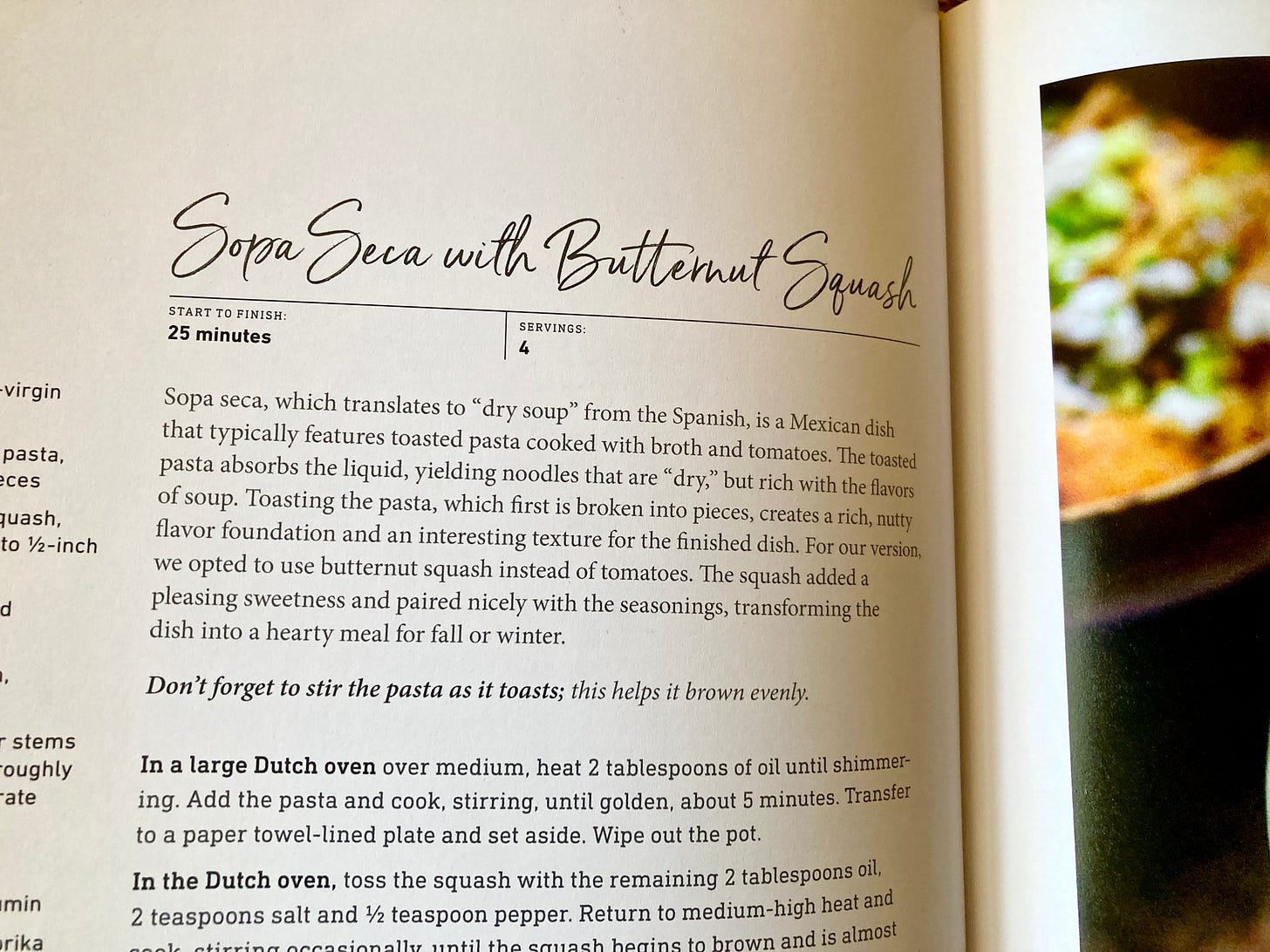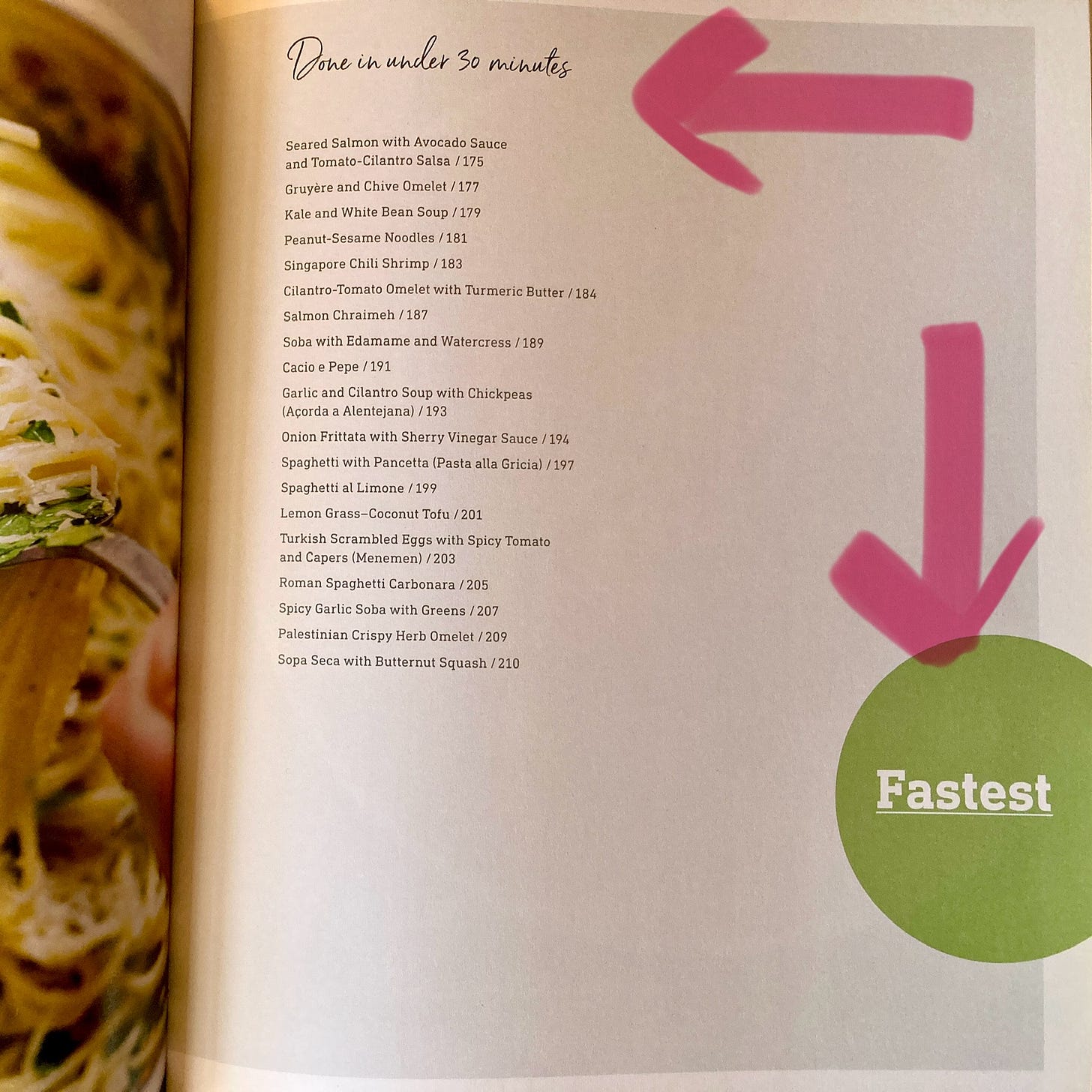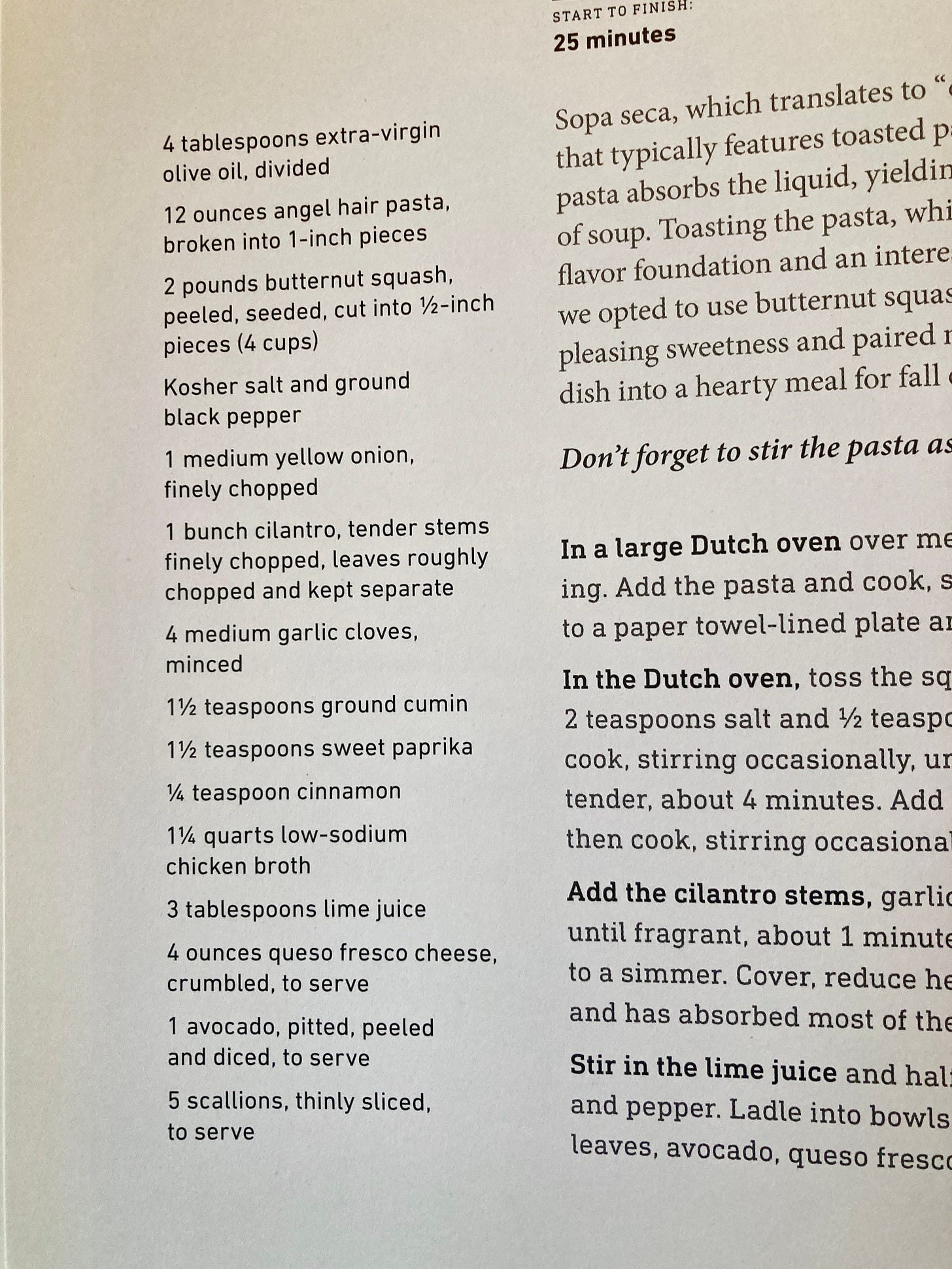Interpreting “cook times” in recipes
Helpful tips from your internet sous chef, plus an announcement!
Hello all!
The end of January always feels both sad—lots of fir trees abandoned on the curb for trash pickup—and triumphant—February is a short month, which means it’s practically spring, right?!
Even though February is short, I hope we can all make the most of it. It’s the perfect time to hunker down, not to sleep and hide but to prime ourselves for a huge burst of spring growth, blooming right along with the trees and flowers.
And, in keeping with the theme of laying foundations for growth…
This newsletter marks the beginning of a new category of emails and website content that taps into my extensive experience as a cooking teacher and product tester/reviewer. I will of course continue sharing recipes, but I plan to add reviews and guides both to my newsletter cycle and to small-pantry.com. Reviews will include pantry items and cookbooks, packed with real testing info and professional evaluations to help you decide if they are worth your hard-earned money and a spot on your shelf. Guides will begin with kitchen basics, pulling from the most common questions I’ve gotten over the years from students and friends.
Some of these things will live on my website and others will be newsletter-exclusives. While my website will always be free, I will be using a paywall for some of the more involved newsletter content. Paid subscriptions are meant to be the equivalent of buying me a cup of coffee each month, and are hopefully accessible to all. However, if upgrading to paid isn’t an option for you don’t worry—I promise the free newsletters will be just as much fun as they are now! Keep an eye out for more details soon. ♥
Tips from your friendly neighborhood internet sous chef: Interpreting “Cook Times” in recipes
How often have you tried a new recipe and it takes you much longer than the recipe promises? Or maybe you’ve followed a recipe as precisely as possible, taking it off the stove at the right time, only to be disappointed by a meal that isn’t as beautifully browned or crispy as the picture.
Today we’re going to chat about one of the most common frustrations that students and friends share with me: feeling betrayed by recipe cook times.
As a home cook, I’ve absolutely been burned by recipe times that turn out to be more aspirational than realistic. Sometimes it’s laziness on the part of the writer but, sadly, it can also be purposeful. As a professional recipe developer in a real-deal test kitchen, I was told on multiple occasions to fudge the timings on recipes. Sometimes editorial even did it without asking! It was more important to advertise recipes as “30 minutes or less” than to offer home cooks an accurate cook-time.
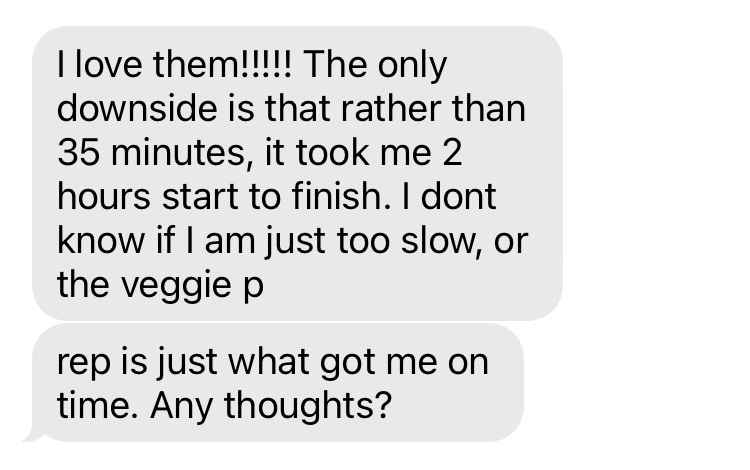
When I include times in recipe steps, they are based on an actual timer sitting next to me during each round of testing. Prep times are estimates, but I try to estimate generously to account for folks who aren’t as speedy as me when it comes to, say, dicing onions. I also try to account for the fact that cooking at home is often an act of juggling. Rarely is it possible to put your head down and just cook the same way that you can in a test kitchen or restaurant kitchen. Pets, partners, kids, laundry…There always seems to be something that interrupts the process.

I tell you all of this because I truly do want you to feel confident using the times I give you in my recipes. However, I will always emphasize that ultimately times are just guidelines. They might be big picture guides (like prep time, overall time, cooling time) or they might be times for specific cooking steps and paired with a visual cue. Regardless, if a recipe offers times they should be accurate enough to effectively guide you in the right direction.
But… the reason we’re talking about all of this is because of how often those times let us down. So how do we navigate that uncertainty?
♥♥♥
Hey there! Cooking for friends and family is a love-language, am I right? Well, let’s take that love and spread it as far as we can! Especially now, with an uncertain future looming, I suggest seeking out local nonprofits that support mutual aid endeavors like community fridges and advocacy for your unhoused neighbors? Or perhaps supporting organizations that provide critical support for Trans youth? I also encourage finding ways to support anti-genocide efforts and relief aid in Palestine, such as through organizations like Anera.
♥♥♥
Big Picture: Using “Total Time” to plan your evening
The “total time” listed at the beginning of the recipe can be the most helpful when deciding what you have the capacity to make. If you’re trying to cook your date dinner before taking them to an 8pm movie, you need your recipe to fit your evening!
Sadly, the situations where I’ve been most let down by recipe times have involved trusting that “total time.” Claims like “dinner in 30 minutes or less” are such big selling points that recipe times often get manipulated to catch the eye (and Google algorithms). Those texts that I shared from a frustrated friend? The entire theme of the cookbook she was using was weeknight friendly, separating recipes out into categories based on overall time. When the big-bosses decided there weren’t enough super-fast recipes in the book, they put pressure on the development team and editorial to tweak times enough to force them into a faster category.
If that happens at a “reputable” company with a fully functioning test kitchen that churns out professionally edited cookbooks, how can you trust the random recipes you find on Google? In my grouchy opinion…you can’t. But you can keep some bigger-picture factors in mind which will help you assess the recipe and map out your evening.
Know your comfort zone and energy levels
When overall time is broken down into categories like “prep time” and “active time,” it’s important to know thyself and add extra time as needed. If a recipe suggests 10 minutes of prep and you don’t think of yourself as a speedy chopper, you might budget an extra 5 minutes. But if you had a long day, your dog keeps getting underfoot, and you’re expecting a call from your doctor, you might need to budget even more time, maybe an extra 15 minutes, maybe more.
When a recipe only has an “overall” time
If the recipe only offers a “Start to finish” time, then you should scan the ingredients list to get a sense of how much effort the prep requires. Take note of chopping instructions, what ingredients might be slow to wash and dry (mushrooms and leafy greens, for example), and how many ingredients are simply dump-and-stir (like dried spices). Just for grins, let’s look at the ingredients listed below:
The olive oil, spices, and broth are all quick to measure out, but every other ingredient requires some kind of knife work. The only ingredient that is particularly challenging is the butternut squash, especially if your knives aren’t terribly sharp. But let’s just assume that you’ve bough the pre-cubed squash most markets have. Even then, you have to cut the chunks (usually 1-inch or larger) much smaller. Plus washing, drying, and chopping the cilantro, chopping onion, mincing garlic… And don’t forget breaking the pasta into small bits. It’s not hard, but it’s boring and it takes forever.
So how much time would you budget for this prep? I’d allow about 20 minutes for myself, saving the two garnishes (avocado and scallions) to do at some point while my pot bubbles on the stove. If I’m chatting while breaking the pasta it might take longer. But I dice and mince quite fast and breaking down a big squash is something I do all the time. So if a professional at home would allow about 20 minutes of prep… Do you spy that “start to finish” up at the top? 25 minutes start to finish my ass!!
Good thing we read through the ingredients first, right?
When you’re estimating your prep time, keep an eye out for anything that you’re unfamiliar with, like breaking down a whole butternut squash or prepping a whole chicken for roasting. Allow yourself some extra time—it always feels better to be ahead of schedule than behind. Plan similarly if you’re making something with lots of repetitive components to process, like rolling small meatballs or filling dumplings, especially if you don’t do that process often. Give yourself some extra time to find your rhythm.
Fun Fact: The book that recipe list came from won a James Beard Award and that is not the only problematic recipe in the book. Further proof that cookbook awards are BS and not good indicators of quality. I said what I said!!
Specific Steps: Using timing cues in tandem with visual cues
I know I’m repeating myself but… when it’s actually time to cook through the recipe, remember that times are just guidelines and that the visual cues are what’s most important. The times given in a recipe are meant only to give you an idea of how long a step will take. If something “simmers until thick, 20 minutes,” you probably have time to use the bathroom or start a load of laundry before checking on your pan. But, if something “simmers until thick, 5 minutes,” you’ll know to stay nearby and keep a closer eye on your stove.
Either way, you are waiting for something to happen in your pan. If it takes a few minutes more or less than indicated that’s okay. A good timing cue will keep you in the right ballpark so that you will be ready when your food has hit the visual cue (thickened, turned golden brown, reduced by half, etc).
How to adjust when times don’t line up at all:
It’s worth mentioning that sometimes a step takes WAY longer or shorter than indicated. In those cases it might just be a bad recipe, but you should also ask yourself a few questions about your equipment:
a) is your cooking temperature correct?
b) are you using a pan similar to what the recipe calls for?
c) do you often struggle with your stove/oven?
Adjusting cooking temps
If your temperature is off, that’s an easy fix! We all forget to increase or decrease heat sometimes, causing food to brown too fast or wilt and steam instead of getting crispy. Double check that you didn’t miss a temperature change, such as decreasing to low heat to maintain a gentle simmer.
Using the right tool—or accommodating “wrong” ones
If you’re using a pan that is bigger/smaller/deeper/shallower than called for, it will affect everything from rate of browning to evaporation. You’ll have to adjust your cooking, and you’ll need the confidence to identify which adjustments to make.
Broadly speaking, you can keep the following adjustments in mind:
A smaller pan will decrease rate of browning and crisping thanks to the pan being more crowded. You’ll need to add more time or to work in batches.
A bigger pan will increase rate of browning and create a risk of burning thanks to more space for air circulation. You might adjust temperatures down a bit, or just be more vigilant in monitoring your pan. If a fond is forming, you might need to deglaze sooner than planned, to prevent those valuable stuck-on bits from burning.
A deeper pan will trap moisture and promote steaming. You might need to add less liquid or add more time to allow liquid to reduce properly.
A shallower pan will allow more moisture to escape, aka promote evaporation and reduction of liquids. You might need to shorten a simmering time or top off your liquid if it reduces too fast.
Navigating a finicky stove or oven
If you often struggle with your stove or oven, it’s up to you to know the foibles and adjust accordingly. No matter how precisely a recipe is tested and written, there is only one person who can account for an oven that has killer hot spots or a stove that can’t hold a low simmer. That person is you! We all have to learn how to work with the tools we’ve got.
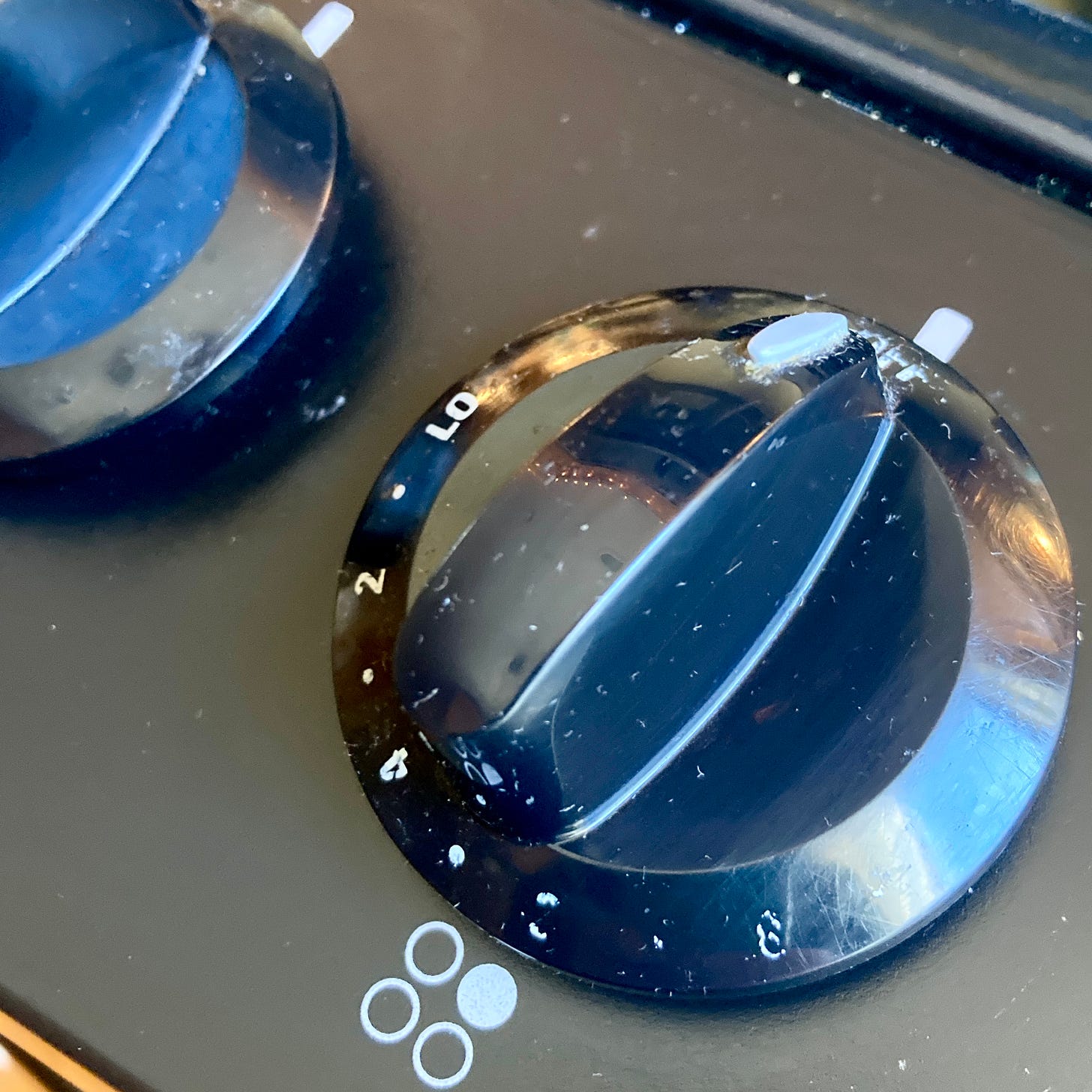
If you’ve been tolerating a crappy stove or oven for years and then finally move or treat your kitchen to an upgrade, you’ll have to re-learn the new appliances. Even shifting from one “good” appliance to another will have a learning curve, since no stove or oven cooks exactly the same way as another. Little things, like how far to turn the knob to hit the perfect “medium-high,” will take some getting used to.
If you’ve done everything you can and timing is still off…?
What if your temp is correct, you’re using the right pan, your stove is a reliable friend, but the timing is still way off? Then it’s not you, it’s the recipe! You’ll have to rely on your senses and a bit of intuition to make sure your dish hits all the necessary visual cues.
Bonus Tip: Don’t forget real life context beyond the recipe!
It’s really easy to pick a recipe that claims to take an hour, estimate an extra 15 minutes to account for sluggishness at the end of a workday, and leave it at that. But if I walk into the kitchen at 6 assuming I’ll be eating at 7:15, I’m going to be unpleasantly surprised.
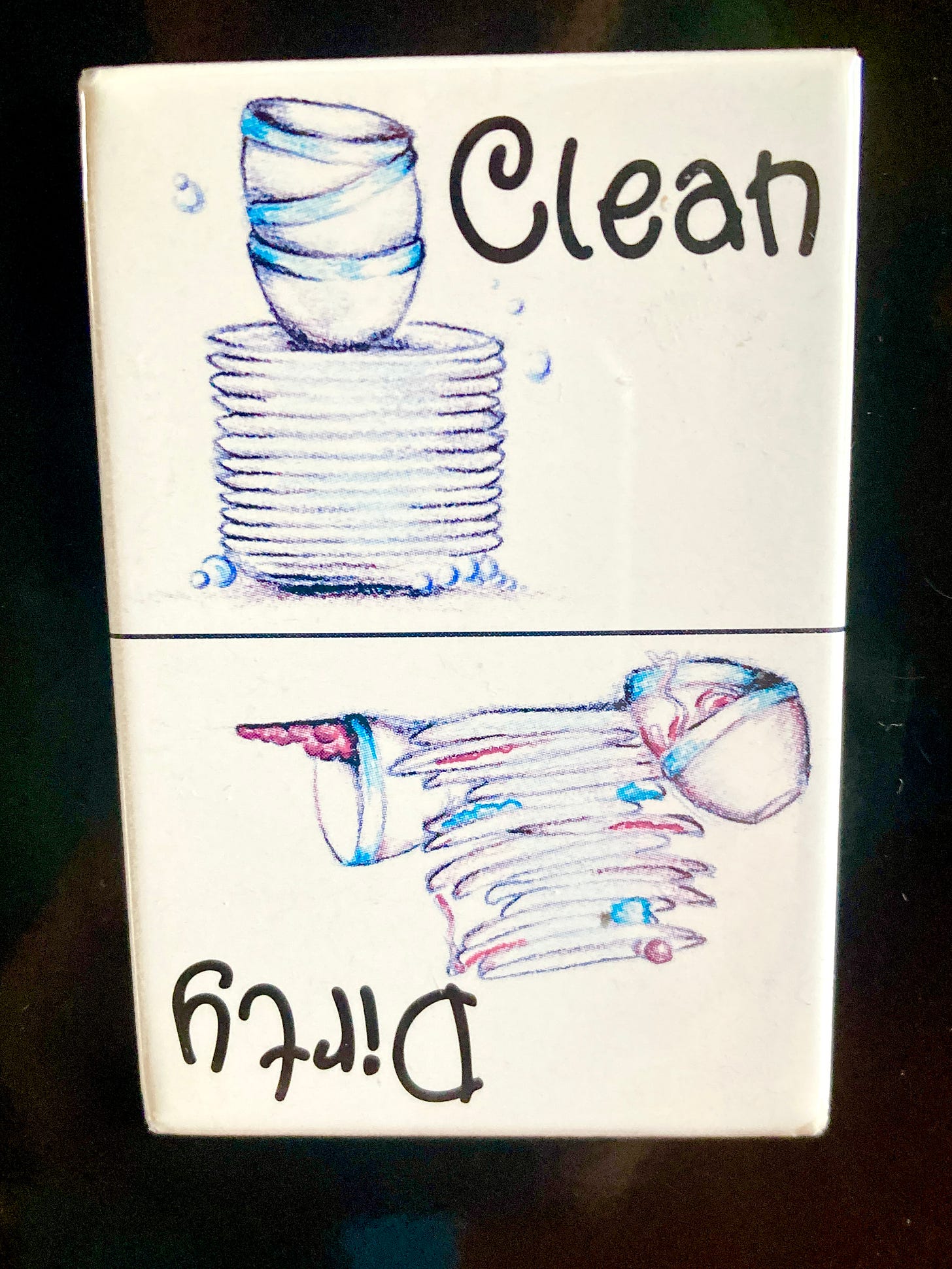
I can’t speak for all developers, but my recipes account for only the prep and steps listed on the page. I don’t account for pulling ingredients out of the fridge, setting up cutting boards, cleaning the lunch dishes left in the sink… I do my best to take into account the time needed to trim away gristle and bone shards from bone-in chicken thighs, but I’m not factoring the time it takes to remove chicken thighs from the package and clean up any raw chicken splatters that hit the countertop.
When mapping out how much time you want to spend in the kitchen, don’t forget to consider all the setup and cleanup on either end of the recipe’s prep and cook time.
Thanks so much for reading! I hope this mini-guide gave you some good food for thought, and maybe helped you feel a bit more confident navigating cooking times when trying new recipes.
Have a wonderful weekend, and be well!
xoxo Julia

